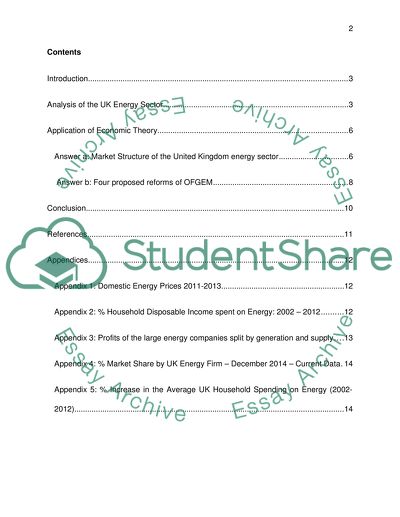Cite this document
(“Discuss the findings of the OFGEM report with regards to the UK energy Assignment”, n.d.)
Discuss the findings of the OFGEM report with regards to the UK energy Assignment. Retrieved from https://studentshare.org/macro-microeconomics/1674213-discuss-the-findings-of-the-ofgem-report-with-regards-to-the-uk-energy-market-and-discuss-if-more-competition-between-the-big-six-uk-energy-firms-may-benefit-uk-consumers
Discuss the findings of the OFGEM report with regards to the UK energy Assignment. Retrieved from https://studentshare.org/macro-microeconomics/1674213-discuss-the-findings-of-the-ofgem-report-with-regards-to-the-uk-energy-market-and-discuss-if-more-competition-between-the-big-six-uk-energy-firms-may-benefit-uk-consumers
(Discuss the Findings of the OFGEM Report With Regards to the UK Energy Assignment)
Discuss the Findings of the OFGEM Report With Regards to the UK Energy Assignment. https://studentshare.org/macro-microeconomics/1674213-discuss-the-findings-of-the-ofgem-report-with-regards-to-the-uk-energy-market-and-discuss-if-more-competition-between-the-big-six-uk-energy-firms-may-benefit-uk-consumers.
Discuss the Findings of the OFGEM Report With Regards to the UK Energy Assignment. https://studentshare.org/macro-microeconomics/1674213-discuss-the-findings-of-the-ofgem-report-with-regards-to-the-uk-energy-market-and-discuss-if-more-competition-between-the-big-six-uk-energy-firms-may-benefit-uk-consumers.
“Discuss the Findings of the OFGEM Report With Regards to the UK Energy Assignment”, n.d. https://studentshare.org/macro-microeconomics/1674213-discuss-the-findings-of-the-ofgem-report-with-regards-to-the-uk-energy-market-and-discuss-if-more-competition-between-the-big-six-uk-energy-firms-may-benefit-uk-consumers.


